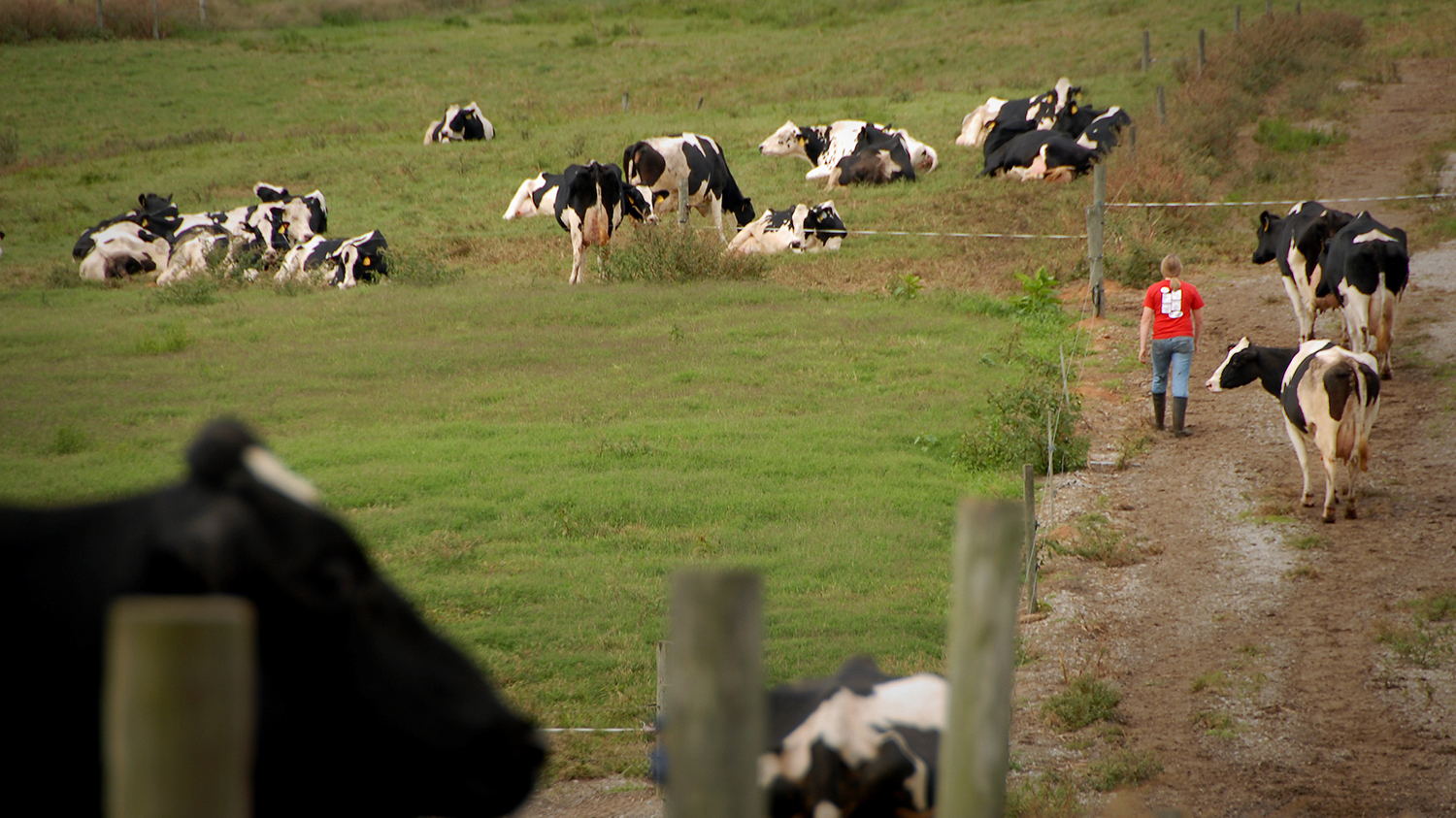CALS scientist honored as emerging scholar
Dr. Julie Hicks, a postdoctoral scholar and recent Ph.D. degree recipient from N.C. State University’s College of Agriculture and Life Sciences, recently won a top regional award for her research into the molecular-level processes involved in one of the world’s most important swine diseases.
Hicks received the 2013 Emerging Scholar Award from the Southern Section of the American Society of Animal Science.
The annual award highlights exceptional research conducted in the region by Ph.D. candidates and their mentors.
Hicks earned her Ph.D. in animal science and functional genomics in December 2012. She had earlier earned a master’s degree, also from N.C. State, for studies of embryonic chick development.
Hicks was honored for her research on the porcine reproductive and respiratory syndrome, or PRRS, virus. The persistent virus kills fetal pigs and causes respiratory illness in young ones. Each year, it costs the U.S. pork industry about $600 million.
To learn more about PRRS and thus open new pathways for preventing and managing it, Hicks studied interactions between the virus and pig cells.
Hicks found that two proteins, GP5 and M, which are on the outside of the virus cell, interact with a protein called SNAPIN in pig cells infected with PRRS. When she manipulated the infected cells to reduce the level of SNAPIN, she found that the virus did not replicate well. That indicated that the interaction between GP5 and M and SNAPIN is a significant step in the infection cycle, Hicks said.
“In the future, if we can figure out a way to block that interaction, maybe we can develop a better way” of preventing or managing PRRS, she added.
Hicks also investigated how the PRRS virus affected microRNAs, or miRNAs, which are small RNA molecules that reduce protein expression and have been found to be important in immune response. Hicks found that quantities of a specific miRNA, miR-147, were reduced, or down regulated, when she infected swine alveolar macrophages, which are cells involved with the immune system, with PRRS. She thinks that this down regulation affects SNAPIN expression.
“We are thinking maybe the virus is inducing that to help maintain SNAPIN levels for its replication. Maybe it’s a host response, and the virus is just benefiting from it,” she said. “So those are the new areas we are going to explore. We don’t really know the answers to that right now.”
“Ultimately, once we understand all these components and we put everything together with what we’ve known before, I think that’s really going to give us ways of developing new treatment methods,” she said.
Hicks conducted her research under the direction of Dr. H.C. “Sunny” Liu, CALS associate professor in animal science. Hicks is now a postdoc in the lab, as she pursues a career as an animal science researcher for industry, government or academia.
Liu said that Hicks’ research “has made an outstanding contribution to our understanding of PRRSV pathogenesis. Viral-induced diseases, such as PRRS, cumulate in billions of dollars in losses for the livestock industry. Our research is important because to truly understand and combat pathogens, we must determine what impact they have at a cellular level. By doing so, we can discover their weaknesses, providing new avenues to reduce their influence on the global economy.”
— Dee Shore
- Categories:


